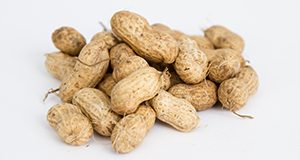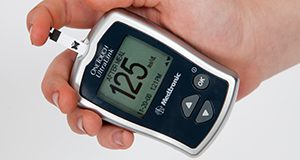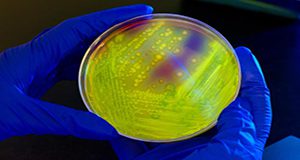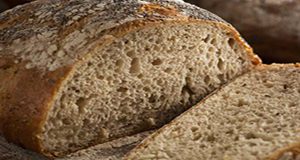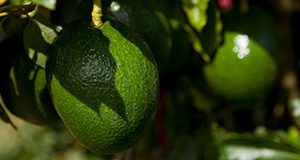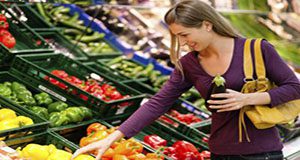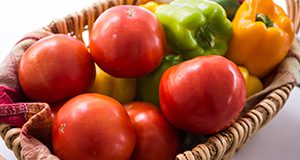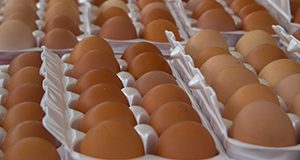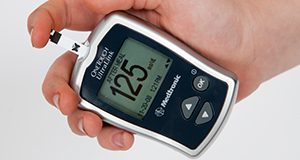Everyone needs folate. It is especially important for women who can become pregnant. Pregnant and nursing women, growing children, and older adults also need plenty of folate. This 2-page fact sheet is a major revision that discusses folate requirements, ways to meet those requirements, and possible effects of folate deficiency. Written by Linda B. Bobroff, and published by the UF/IFAS Department of Family, Youth and Community Sciences, revised February 2018.
http://edis.ifas.ufl.edu/fy186
Category: Health & Nutrition
Healthy Living: Diabetes Care During Sick Days
When you are sick, your blood glucose levels are harder to regulate. Being sick often causes blood glucose levels to rise, which can lead to serious health conditions. It is important to have a plan to manage your sick days so you are prepared ahead of time. This 3-page fact sheet is a major revision that provides information on the ways illness can affect blood glucose, suggestions for easy foods to have on hand, and a checklist to use when deciding whether a call to a doctor is in order. Written by Jennifer Hillan, Emily Minton, and Linda B. Bobroff, and published by the UF/IFAS Department of Family, Youth and Community Sciences, revised February 2018.
http://edis.ifas.ufl.edu/fy884
Clostridium difficile: An Important Opportunistic Pathogen in Healthcare-Associated Infections
Healthcare-associated infections are infections that patients can get while receiving medical treatment in a healthcare facility. One opportunistic pathogen, Clostridium difficile, has been getting more attention in recent years because of its association with antibiotic use and a high death rate among the elderly. This 7-page factsheet will provide an overview of Clostridium difficile infection (CDI) with a focus on healthcare-associated infections. Written by Soohyoun Ahn and Amarat H. Simonne and published by the UF/IFAS Department of Food Science and Human Nutrition, January 2018.
http://edis.ifas.ufl.edu/fs253
CKD: A Guide to Higher Fiber Foods
Living with chronic kidney disease (CKD) presents many challenges, and diet is one of them. People with CKD may find it difficult to consume enough fiber-rich foods while following the other diet recommendations for CKD. This 5-page guide will discuss the health benefits of fiber and provide some examples of fiber-rich foods that may be good choices for people with CKD. Written by Wendy J. Dahl and Nancy J. Gal and published by the UF/IFAS Department of Food Science and Human Nutrition, January 2018.
http://edis.ifas.ufl.edu/fs305
South Florida Tropicals: Avocado
This 4-page fact sheet is a major revision that discusses the background, availability, selection, ripening, storage, uses, yield, nutritive value, and basic, safe preparation of the avocado. The document also contains several avocado-based recipes. Written by Linda B. Bobroff and Amy Simonne, and published by the UF/IFAS Department of Family, Youth and Community Sciences, revised January 2018.
http://edis.ifas.ufl.edu/he606
Diet and Brain Health
Following a healthful diet provides many benefits throughout the life cycle. Maintaining good eating habits as we age can be especially helpful to preserve cognitive health (the ability to remember, learn, and make decisions). This 3-page publication provides tips for healthful eating that may help to maximize brain health in older adults. Written by Pooja Tolani and Wendy J. Dahl and published by the UF/IFAS Department of Food Science and Human Nutrition, January 2018.
http://edis.ifas.ufl.edu/fs304
The New Nutrition Facts Label
The Nutrition Facts label is a great tool for consumers who are trying to make better food choices; it was created in 1993 to help members of the public learn more about the nutritional value of their food. Revisions to the label’s design were released in 2016, marking the first major change to the label in over 20 years. This 3-page document, written by Samantha Buddemeyer and Gail P. A. Kauwell, discusses the new features of the Nutrition Facts label. Published by the UF/IFAS Department of Food Science and Human Nutrition, January 2018.
http://edis.ifas.ufl.edu/fs300
Raising Healthy Children: Age Five
This publication is designed to give you some information about the social, mental, and physical development of your five-year-old child. This new 5-page fact sheet discusses nutrition, eating behaviors, healthy food options, cooking activities, and physical activity. Written by Claire Marie Fassett and Karla P. Shelnutt, and published by the UF/IFAS Department of Family, Youth and Community Sciences, January 2018.
http://edis.ifas.ufl.edu/fy1475
Healthy Meal Plans
A meal plan is a guide to help you plan daily meals and snacks. It allows you to eat foods you enjoy that provide a good balance of nutrients for your health. Meal plans can be used by anyone interested in healthy eating, and they are very helpful for people who want to manage their weight. This 20-page fact sheet is a major revision that discusses meal plans, food lists, and healthy choices. Written by Linda B. Bobroff, and published by the UF/IFAS Department of Family, Youth and Community Sciences, revised December 2017.
http://edis.ifas.ufl.edu/fy522
Healthy Eating: Lowering Your Blood Pressure with DASH
One eating plan that has been shown to prevent and reduce high blood pressure is DASH. This 3-page fact sheet is a major revision that discusses the DASH eating plan, its importance, foods included in the eating plan, and servings. Written by Valerie Weyenberg, Karla P. Shelnutt, and Linda B. Bobroff, and published by the UF/IFAS Department of Family, Youth and Community Sciences, revised December 2017.
http://edis.ifas.ufl.edu/fy1128
Cuba and US: Food Customs and Health
Cubans currently make up the third largest Hispanic population in the US, with many living in Florida (mostly in Miami). Therefore, their cultural influence is notable, especially when it comes to cuisine. This 3-page document discusses traditional meals, diet, and health among Cubans. Written by Agata Kowalewska and Edwin Makarevich and published by the UF/IFAS Food Science and Human Nutrition Department, December 2017.
http://edis.ifas.ufl.edu/fs303
Living Well to Keep Your Pressure Down
High blood pressure, or hypertension, can cause serious health problems. It makes your heart work harder and can damage your blood vessels even if you feel okay. Everyone should have their blood pressure checked regularly. If you have certain risk factors, you are more likely to have high blood pressure. This 6-page fact sheet is a major revision that discusses risk factors and ways to reduce risk. Written by Linda B. Bobroff, and published by the UF/IFAS Department of Family, Youth and Community Sciences, revised November 2017.
http://edis.ifas.ufl.edu/fy305
Peach Consumption: A Profile of Purchasers and Non-Purchasers
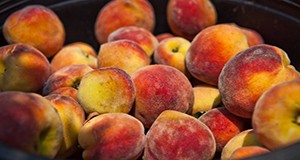
Peaches are among the most commonly produced fruits in the United States; understanding consumer awareness, perceptions, and preferences regarding Florida peaches is important to the future of the industry. This 5-page document addresses consumers’ perceptions of Florida peaches, purchasing motivations and barriers, preferred packaging options and opportunities, purchasing locations, and knowledge of peach health benefits. Written by Joy Rumble, Kara Harders, and Kathryn Stofer and published by the UF/IFAS Department of Agricultural Education and Communication, December 2017.
http://edis.ifas.ufl.edu/wc288
Health Benefits of Pumpkin Seed and Nutrition Profile of 35 Pumpkin Accessions
Pumpkin seed is high in oil, protein, and total unsaturated fatty acids and is a popular ingredient in snacks and other foods sold across the country. This 5-page article will discuss the health benefits, production, processing, and nutritional profile of pumpkin seed. Written by Geoffrey Meru, Yuqing Fu, Dayana Leyva, Paul Sarnoski, and Yavuz Yagiz and published by the UF/IFAS Horticultural Sciences Department, November 2017.
http://edis.ifas.ufl.edu/hs1312
Best Practices for Shoppers at the Farmers' Market
Farmers’ markets are popular, diverse places to shop for fresh, local food, nursery stock, handmade crafts, and much more. This 3-page fact sheet is one in a “Florida Farmers’ Markets” series and offers recommendations for shoppers for a successful farmers’ market experience. Written by Maria Rometo, Jamie Sapijaszko, and Soohyoun Ahn and published by the UF/IFAS Department of Food Science and Human Nutrition, November 2017.
http://edis.ifas.ufl.edu/fs302
Food Allergies
A food allergy is a specific immune system reaction that happens after a person consumes what is normally considered a safe food. Reactions can range in severity from minor to fatal. This 4-page document discusses the cause, symptoms, and management of food allergies in children and adults. Written by Keith R. Schneider, Renee Goodrich-Schneider, Soohyoun Ahn, Susie Richardson, Ploy Kurdmongkoltham, and Bruna Bertoldi and published by the UF/IFAS Department of Food Science and Human Nutrition, November 2017.
http://edis.ifas.ufl.edu/fs123
Facts About Vitamin D
Vitamin D is needed for normal absorption of calcium and phosphorus. It helps put these minerals into bones and teeth. This makes bones stronger and reduces risk for bone fractures. Vitamin D also helps keep the immune system functioning normally, so our bodies can resist some types of disease. This 3-page fact sheet is a major revision that discusses effects of vitamin D deficiency, intake recommendations, and sources of vitamin D. Written by Linda B. Bobroff and Isabel Valentín-Oquendo, and published by the UF/IFAS Department of Family, Youth and Community Sciences, revised November 2017.
http://edis.ifas.ufl.edu/fy207
Florida Peaches: A Perfect Snack
The growing conditions in Florida have given Florida-grown peaches unique characteristics that make them an ideal springtime snack. This 3-page document discusses the characteristics, health benefits, purchase, and storage of Florida peaches. Written by Joy Rumble, Kara Harders, and Kathryn Stofer and published by the UF/IFAS Department of Agricultural Education and Communication, November 2017.
http://edis.ifas.ufl.edu/wc287
Sick Day Management for Adults with Diabetes Who Take Insulin
When people have type 1 or type 2 diabetes and take multiple daily insulin injections, their blood glucose levels can rise drastically due to a cold or another minor illness. This can result in serious health problems. The best way for people with diabetes to prevent a minor illness from becoming a major illness is to have a personalized sick day plan designed with their health care provider before they become ill. This 4-page fact sheet is a major revision that discusses ways in which illness affects diabetes control, development of a sick day plan, times to call your health care provider, checking blood glucose and urine ketones, medicines, and diet. Written by Nancy J. Gal and Linda B. Bobroff, and published by the UF Department of Family, Youth and Community Sciences, revised June 2017.
http://edis.ifas.ufl.edu/fy1281
South Florida Tropicals: Carambola
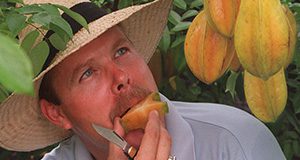 The carambola or star fruit is native to Southeast Asia. It was introduced to Florida about 100 years ago. This 4-page fact sheet is a major revision that discusses availability, selection, uses, nutritive value, and food safety during preparation of carambola. This document also includes several recipes. Written by Amy Simonne and Linda B. Bobroff, and published by the UF Department of Family, Youth and Community Sciences, revised April 2017.
The carambola or star fruit is native to Southeast Asia. It was introduced to Florida about 100 years ago. This 4-page fact sheet is a major revision that discusses availability, selection, uses, nutritive value, and food safety during preparation of carambola. This document also includes several recipes. Written by Amy Simonne and Linda B. Bobroff, and published by the UF Department of Family, Youth and Community Sciences, revised April 2017.
http://edis.ifas.ufl.edu/he613
